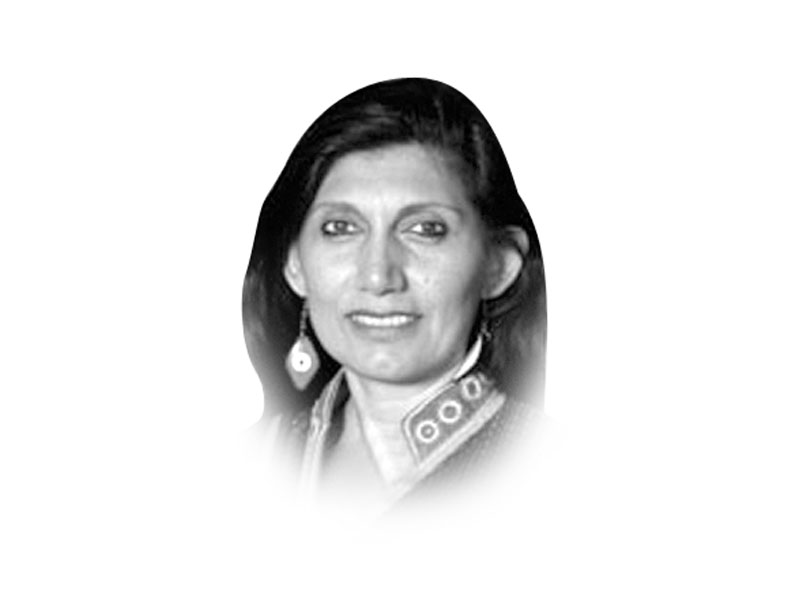
Let’s look at the history of the ministry.
The Division of Women’s Development was founded in 1979. Please remember that the most devastating laws against women, the infamous Hudood Ordinance, were brought out in the same year. The division was created right before going to the United Nation’s Second World Conference on Women in Copenhagen in 1980. With all the restrictions and black laws against women, the government wanted to improve its image for the international audience. However, the government continued to trample on women’s rights for a decade while this division became a part of the establishment.
The division was upgraded to a full ministry by Benazir Bhutto’s government in its effort to revive women’s rights. The intention was good and some projects were initiated, but moving the bureaucracy was a serious challenge as it remained resistant to women’s empowerment throughout its existence. The social stigma attached to working at the ministry made this the last choice for postings. As a result, most secretaries were placed there as their last stop before retirement, with a turnover of up to four secretaries a year. With the exception of Salim Mehmood Salim, the others were least bothered about their portfolio.
This ministry was not based on substantive themes, like agriculture, for example. It was also never intended to be an implementing ministry, but to advise other ministries on women’s issues, which almost never happened and its influence on national policy was close to zero. In the 35 years of its existence, the ministry has hardly anything to show as its own initiative. The list of achievements in women’s empowerment were pushed by either strong political leaders or by civil society networks.
By and large, conservative men occupied key mid-level positions and hardly any of them supported the idea of women’s empowerment. They stalled on all progressive measures advanced by political leaders and continuously undermined the National Commission on the Status of Women (NCSW), established in 2001. Each chair of the commission had to fight with the bureaucracy to get access to their allocated budget and staff. The ministry’s own staff blocked amendments to the NCSW’s law for seven years until 2012, when the commission got its independence in the last government.
While the commission was still intact, the donors who had women’s empowerment as a priority steadily poured funds in the ministry’s bottomless pit to ‘build its capacity’. One after the other, ministry officials set up units inside the ministry with highly paid consultants who would act on behalf of the ministry, hosting big events, so that donors could be consoled that the ministry had improved because of their efforts. These consultants departed as soon as the funds dried up, leaving the ministry with the same bitter men. Over the years I have seen at least six donors engaging in the expensive exercise of ‘capacity building’ and repeating each other’s mistakes. I used to call this ‘propping the ministry with toothpicks’. One heavily funded project on large-scale gender mainstreaming placed in the ministry turned out to be such a disaster that most of the funds were never used. The project evaluation had to be revised thrice so that the donor would not look so bad.
Although I have engaged closely with the division, and then the ministry, since 1987, I learned the details of its operations during the advocacy for the sexual harassment policy and legislation. From 2001 to 2010, I noticed, via first-hand exposure, how this ministry had become a major hurdle in the path of women’s empowerment. In the years 2008 to 2010, when the Alliance Against Sexual Harassment was lobbying for the anti-sexual harassment bills, the ministry did everything in its power to quash the bills. It was only the political leadership that saved the day. At the tail-end of the process, in 2009, I watched the secretary, like a child who could not have his way, purposefully presenting the bills to a Cabinet meeting in such negative way that former information minister Sherry Rehman had to cover it up with her positive comments.
I thank the Eighteenth Amendment Constitutional Reform Committee for pushing against the vested interests in the donor, NGO and consultant community to rid us of at least one of the big hurdles to women’s empowerment. To the policymakers, I ask, if all social sectors have been devolved then why should the women’s portfolio be returned as a federal subject? With the capacity of the federal level openly witnessed in the past decades, they should not raise questions on the provincial capacity. For donors, the Economic Affairs Division is sufficient to channel your funds to emphasise gender issues in sectoral projects at the provincial level. It is rather difficult for us to structure our country to suit others’ convenience.
Published in The Express Tribune, May 20th, 2014.
Like Opinion & Editorial on Facebook, follow @ETOpEd on Twitter to receive all updates on all our daily pieces.



















COMMENTS
Comments are moderated and generally will be posted if they are on-topic and not abusive.
For more information, please see our Comments FAQ